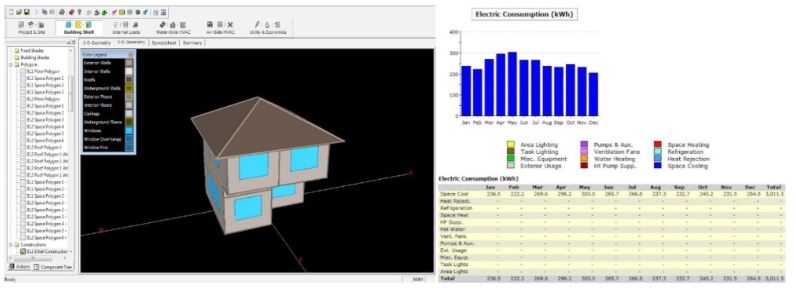Energy Performance of Detached House Building Envelope: Financial Investment Perspective
Keywords:
energy-saving building, assessment frameworks, building envelope, financial feasibilityAbstract
This research aims to study the financial feasibility of designing an energy-saving building envelope, according to Thailand Energy and Environment Assessment Method (TEEAM). First, the author studies Thailand’s energy-saving assessment frameworks and compare assessment categories and rating scores. The results present that the building envelope category is the category with the highest proportion of score in all assessment frameworks. The scoring in the building envelopes category accounts for 23-40% of the total score (approximately 60-88% achieving a minimum tier). This study focus on TEEAM (R-49.02) as an energy-saving assessment and the design of glazing type, exterior materials, and ceiling insulation materials are examined in the sample house. Second, this study examined the cooling energy-saving performance of 29 building envelopes via using energy simulation program (eQUEST v3.64). The results classified saving performance into 4 classes. Finally, the result of energy-saving costs is analyzed compared to an increase in construction costs. To consider the feasibility of financial with 3 indexes, Net Present Value (NPV), Internal Rate of Return (IRR), and Payback Period (PB). The low-efficiency class contributes to 8% energy savings, while construction costs increase by 5%, which provides the IRR at 21%, NPV of 12,130 baht, and PB less than 5 years.
Downloads
References
Chindavanig, T., Suriyothin, P., & Inkarojrit, V. (2007). Energy and Environmental Assessment Method for Buildings in Thailand. The 3nd Conference On Energy Network of Thailand (E-NETT), Bangkok, Thailand.
Department of Alternative Energy Development and Efficiency. (2010). The Thailand Energy and Environmental Assessment Method for Residential Building Sector (R-49.02). Bangkok, Thailand: The Ministry of Energy.
Energy Policy and Planning Office. (2011). Energy Efficiency Development Plan: EEDP 2011-2030. Bangkok, Thailand: The Ministry of Energy.
Jame J. Hirsch & Associates. (2009). eQUEST version 3.64. Retrieved from http://www.doe2.com/equest
Jareemit, D., Inprom, N., & Sukseeda, J. (2016). Uncertianly Distributions in Architectural Design Parameters for Detached Houses Located in Bangkok. ASHRAE and IBPSA-USA SimBuild 2016 Building Performance Modeling Conference Salt Lake City, UT August 8-12.
Neighborhoods. (2016). In: ASHRAE and IBPSA-USA SimBuild. Conference, Salt Lake City, Utah. 2016. Retrieved from http://ibpsausa.org/index.php/ibpusa/article/view/358.
Office of the Basic Education Commission. (2015). Bill of Materials and Labor Cost 2014. Bangkok, Thailand: Ministry of Education.
Sreshthaputa, A., (2012). Ecovillage. Bangkok, Thailand: Papermate.
Sreshthaputa, A., & Sirithumpiti, S. (2017). Ecovillage: Design Guidelines and Assessment System for Sustainable Housing Projects. Academic Journal of Architecture, Chulalongkorn University, 66, 1-18.
Suwanchaisakul, A., & Dendoung, T. (2017). Economic evaluation of buildings envelope’s material and the Thailand energy and environmental assessment method for a residential building. Proceeding of the 6th Conference on Sustainable Energy and Green Architecture. Bangkok, Thailand.
Tantasavasdi, C., Chenvidyakarn, T., & Pichaisak, M. (2011). Integrative passive design for climate change: A new approach for tropical house design in the 21st century. International Journal of Building, Urban, Interior and Landscape Technology (BUILT) , 1, 5-19.

Downloads
Published
How to Cite
Issue
Section
License
Copyright (c) 2020 International Journal of Building, Urban, Interior and Landscape Technology (BUILT)

This work is licensed under a Creative Commons Attribution-NonCommercial-NoDerivatives 4.0 International License.











